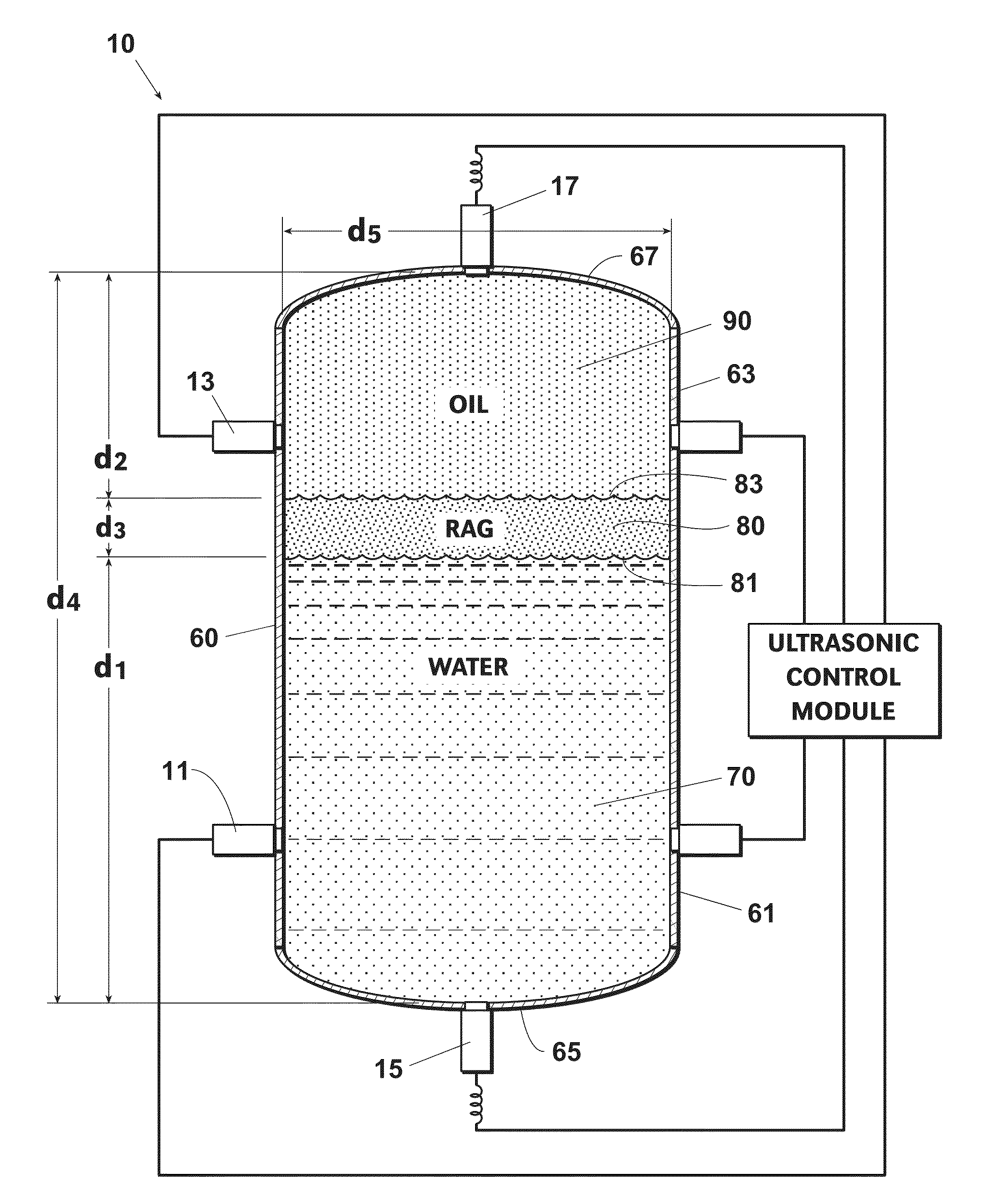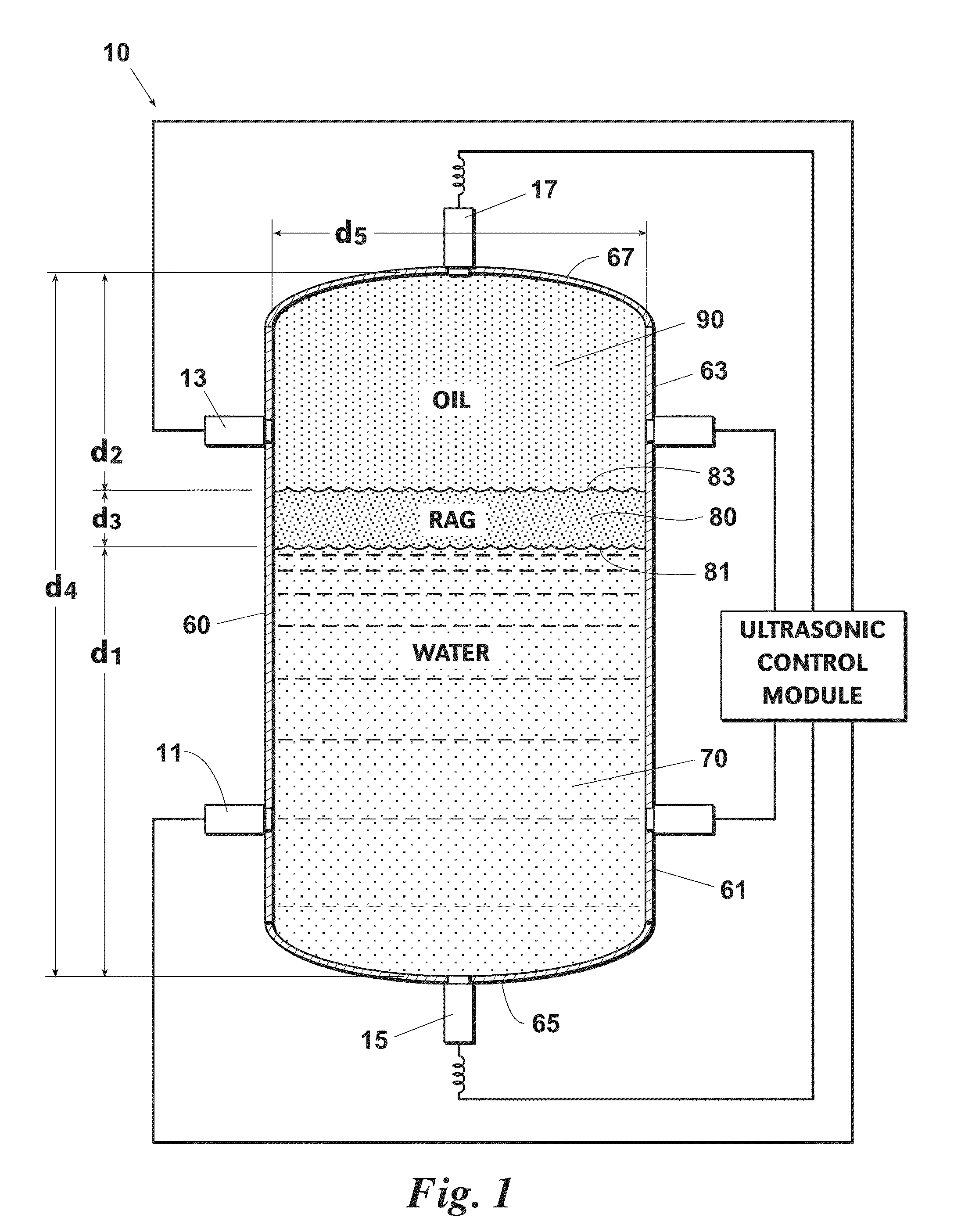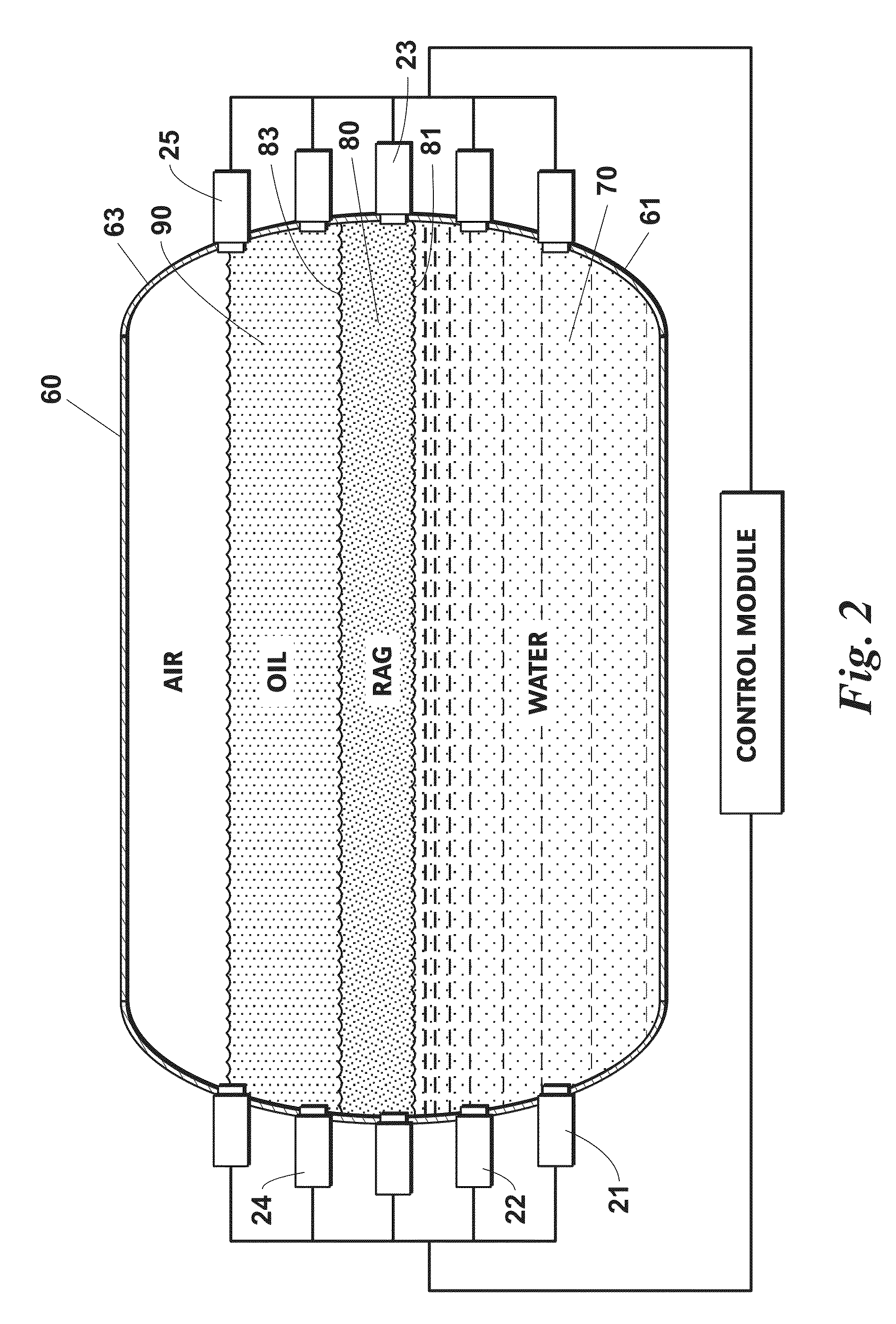Ultrasonic Rag Layer Detection System And Method For Its Use
a detection system and ultrasonic technology, applied in liquid/fluent solid measurement, instruments, volume measurement, etc., can solve the problems of increasing the cost of maintaining the separator vessel and downstream equipment, reducing the effect of dewatering process, and increasing the current demand
- Summary
- Abstract
- Description
- Claims
- Application Information
AI Technical Summary
Benefits of technology
Problems solved by technology
Method used
Image
Examples
Embodiment Construction
[0075]A system and method for detecting and locating the interface emulsion or rag layer in a separator vessel makes use of an acoustic property approach or an imaging approach. Both approaches make use of ranging (pulse echo) and longitudinal (not shear) mode reflectance and are non-ionizing. The signals are sent through the fluid medium and not through the vessel wall or a probe surrounded by the fluid medium.
[0076]The acoustic property approach relies upon differences in acoustic impedance between the oil, rag, and water layers that create an echo detected by transit time measurement. Also, the velocity of sound, density, viscosity and attenuation can be calculated for each fluid in order to determine whether the medium is oil, rag, or water. The imaging approach employs differences in amplitude reflectance at these interfaces to create a brightness mode image of the different layers by each amplitude mode scan line being added spatially.
[0077]A separator vessel is equipped with ...
PUM
| Property | Measurement | Unit |
|---|---|---|
| ultrasonic frequency | aaaaa | aaaaa |
| frequency | aaaaa | aaaaa |
| frequency fL | aaaaa | aaaaa |
Abstract
Description
Claims
Application Information
 Login to View More
Login to View More - R&D
- Intellectual Property
- Life Sciences
- Materials
- Tech Scout
- Unparalleled Data Quality
- Higher Quality Content
- 60% Fewer Hallucinations
Browse by: Latest US Patents, China's latest patents, Technical Efficacy Thesaurus, Application Domain, Technology Topic, Popular Technical Reports.
© 2025 PatSnap. All rights reserved.Legal|Privacy policy|Modern Slavery Act Transparency Statement|Sitemap|About US| Contact US: help@patsnap.com



